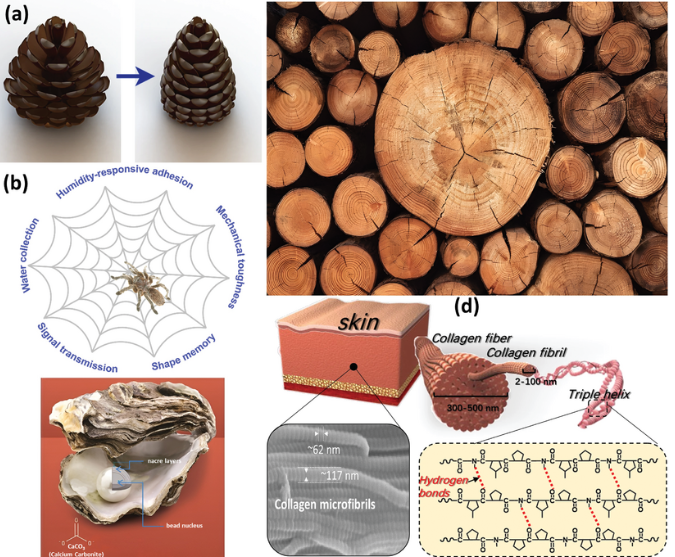Revolutionizing Biomaterials: CU Boulder and UPenn’s Breakthrough in 3D Printing
- Aniksha Kar
- Aug 2, 2024
- 3 min read

The quest for life-like materials capable of replacing and repairing human body parts has long posed a significant challenge for scientists. The inherent strength, stretchability, and variability of real tissues complicate the development of effective biomaterials. However, a collaborative research team led by the University of Colorado Boulder (CU Boulder) and the University of Pennsylvania (UPenn) has made a groundbreaking advancement in this field. Their innovative approach to 3D printing biomaterials combines elasticity, toughness, and adaptability, paving the way for a new generation of medical applications.A New Era of BiomaterialsIn their recent publication in the journal Science, the CU Boulder-led team revealed a 3D printing technique capable of creating materials that can withstand the relentless beating of the heart while also enduring the substantial loads placed on joints. These new materials can easily conform to a patient’s unique anatomical features and, remarkably, they adhere well to wet tissue, which is a critical requirement for many medical applications.As senior author Jason Burdick, a professor of chemical and biological engineering at CU Boulder’s BioFrontiers Institute, noted, “Cardiac and cartilage tissues have very limited capacity to repair themselves. When they’re damaged, there is no turning back.” By developing more resilient materials to enhance the repair process, this research holds the potential to significantly impact patient outcomes.Overcoming Historical ChallengesHistorically, biomedical devices were created using molding or casting methods, which excel at producing identical implants but fall short in personalizing those implants for individual patients. Recent advancements in 3D printing have revolutionized medical applications by enabling the creation of materials in diverse shapes and structures tailored to specific needs.However, traditional 3D-printed hydrogels—materials favored for fabricating artificial tissues—have struggled to transition from the lab to clinical settings. These hydrogels often either break when stretched, crack under pressure, or are too rigid to mold around delicate tissues. “Imagine if you had a rigid plastic adhered to your heart. It wouldn’t deform as your heart beats; it would just fracture,” Burdick explained.Drawing Inspiration from NatureTo overcome these limitations, Burdick and his team took inspiration from the natural world. They looked at the behavior of worms, which can tangle and untangle themselves, forming “worm blobs” with both solid and liquid-like properties. Previous research demonstrated that incorporating intertwined chains of molecules—referred to as “entanglements”—could enhance the toughness of materials.The research team developed a new printing method known as CLEAR (Continuous-curing after Light Exposure Aided by Redox initiation). This innovative approach entangles long molecules within the 3D-printed materials, much like the intertwined structures found in worms. The resulting materials exhibit both strength and elasticity, a combination that has previously been difficult to achieve.In lab tests, the materials demonstrated remarkable durability. One researcher even ran over a sample with her bike, illustrating their toughness. Not only did these new materials outperform those created with traditional 3D printing methods, such as Digital Light Processing (DLP), but they also effectively conformed to and adhered to animal tissues and organs.A Vision for the FutureBurdick envisions a future where these 3D-printed materials could be utilized for a variety of applications, including:Repairing defects in heartsDelivering tissue-regenerating drugs directly to damaged organsProviding support for bulging discsFacilitating needle-free sutures in surgical settings, minimizing tissue damageThe research team has already filed for a provisional patent and is planning further studies to understand how tissues react to these novel materials.Broader ImplicationsBeyond their immediate medical applications, the CLEAR printing method also holds promise for research and manufacturing. The new technique eliminates the need for additional energy to cure or harden printed parts, making the 3D printing process more environmentally friendly.“This is a simple 3D processing method that people could ultimately use in their own academic labs as well as in industry to improve the mechanical properties of materials for a wide variety of applications,” stated first author Abhishek Dhand, a researcher in the Burdick Lab and doctoral candidate in the Department of Bioengineering at UPenn. “It solves a big problem for 3D printing.”ConclusionThe groundbreaking work of the CU Boulder and UPenn team represents a significant advancement in the field of biomaterials, with the potential to transform patient care and improve treatment outcomes for those suffering from heart and cartilage issues. As the research progresses, the implications of these innovative materials could extend well beyond the realm of medicine, influencing various sectors and applications in the years to come.




Comments